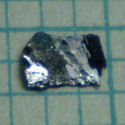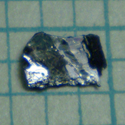Success without pressure
In the last two years, many distinct families of pnictide and chalcogenide superconductors have been discovered as a result of concerted efforts in this field. In almost all cases, an “ordinary” parent compound is turned into a superconductor either by chemical doping, or by application of pressure. One of the structurally simpler materials available is iron selenide, which has as basic building blocks layers of tetrahedra. Application of extremely high pressure has yielded a superconducting critical temperature above , approximately half of the highest reported of in oxygen-deficient .
Now, in a Rapid Communication appearing in Physical Review B, Jiangang Guo and collaborators from the Chinese Academy of Sciences in Beijing, report the synthesis of , a superconducting compound with a critical temperature slightly above at ambient pressure. That value sets a new record for the highest critical temperature at ambient pressure for this family of compounds. Structurally, these materials are related to the pnictide compounds ( ). In this case, the potassium is intercalated between the layers, and the authors claim that the enhancement of is due to the optimization of the carrier density in the layers and also due to the tetrahedra achieving a shape close to the ideal. – Alexios Klironomos





